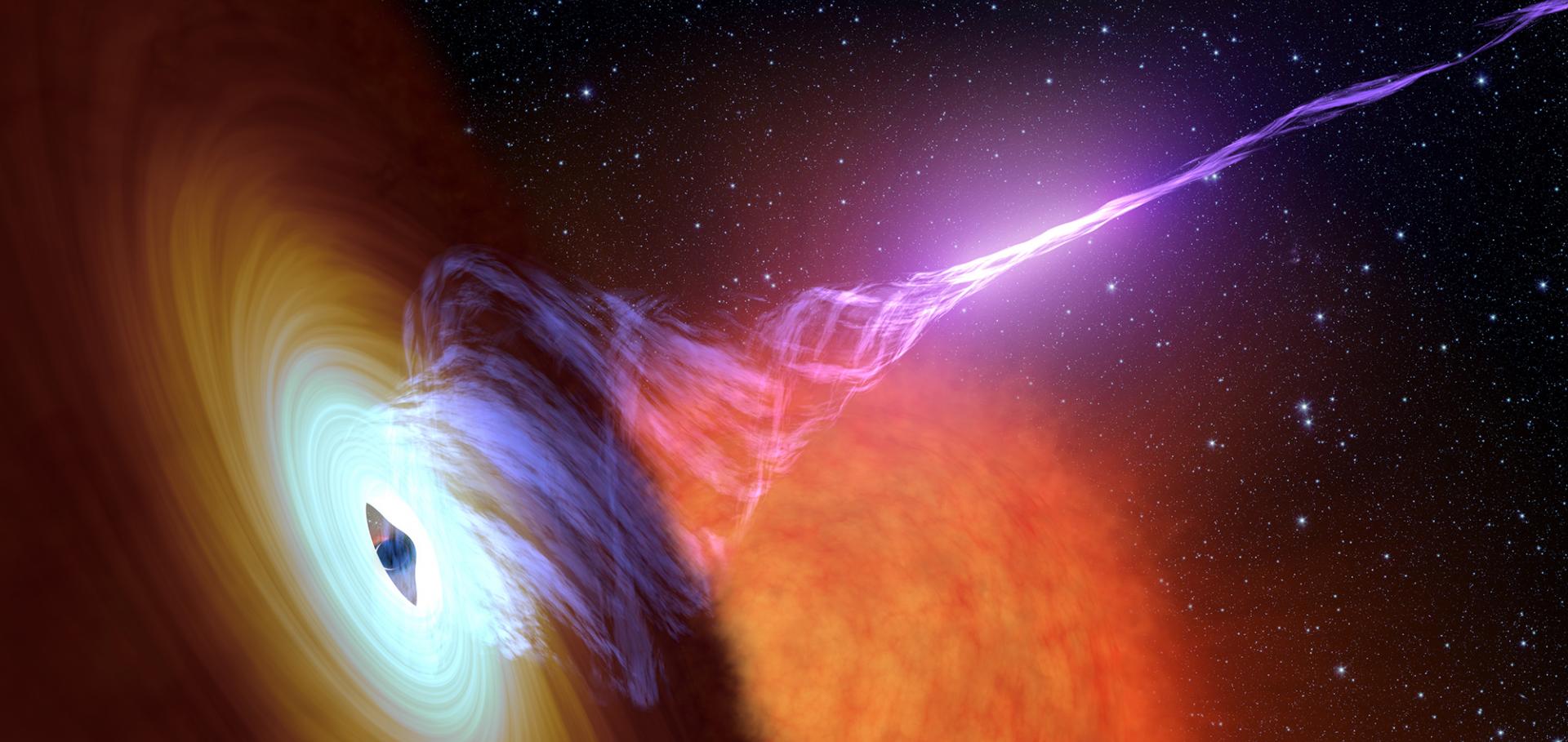A relativistic jet from a neutron star breaking out of its natal supernova remnant
(2025)
Commensal Transient Searches with MeerKAT in Gamma-Ray Burst and Supernova Fields
The Astrophysical Journal American Astronomical Society 988:2 (2025) 227
Abstract:
The sensitivity and field of view of the MeerKAT radio telescope provide excellent opportunities for commensal transient searches. We carry out a commensal transient search in supernova and short gamma-ray burst fields using methodologies established by S. I. Chastain et al. We search for transients in MeerKAT L-band images with integration times of 30 minutes, finding 13 variable sources. We compare these sources to the VLASS and RACS survey data, and examine possible explanations for the variability. Additionally, for one of these sources we examine archival Chandra ACIS data. We find that 12 of these sources are consistent with variability due to interstellar scintillation. The remaining source could possibly have some intrinsic variability. We also split the MeerKAT L band into upper and lower halves, and search for transients in images with an integration time of 8 s. We find a source with a duration of 8–16 s that is highly polarized at the lowest frequencies. This source is spatially coincident with a star detected by the Transiting Exoplanet Survey Satellite. We conclude that this source may be consistent with a stellar flare. Finally, we calculate accurate upper and lower limits on the transient rate using transient simulations.A relativistic jet from a neutron star breaking out of its natal supernova remnant
Monthly Notices of the Royal Astronomical Society Oxford University Press 541:4 (2025) 4011-4024
Abstract:
The young neutron star X-ray binary, Cir X-1, resides within its natal supernova remnant and experiences ongoing outbursts every 16.5 d, likely due to periastron passage in an eccentric orbit. We present the deepest ever radio image of the field, which reveals relativistic jet-punched bubbles that are aligned with the mean axis of the smaller scale jets observed close to the X-ray binary core. We are able to measure the minimum energy for the bubble, which is around = erg. The nature and morphological structure of the source were investigated through spectral index mapping and numerical simulations. The spectral index map reveals a large fraction of the nebula’s radio continuum has a steep slope, associated with optically thin synchrotron emission, although there are distinct regions with flatter spectra. Our data are not sensitive enough to measure the spectral index of the protruding bubbles. We used the pluto code to run relativistic hydrodynamic simulations to try and qualitatively reproduce the observations with a combined supernova-plus-jet system. We are able to do so using a simplified model in which the asymmetrical bubbles are best represented by supernova explosion which is closely followed (within 100 yr) by a phase of very powerful jets lasting less than 1000 yr. These are the first observations revealing the initial breakout of neutron star jets from their natal supernova remnant, and further support the scenario in which Cir X-1 is a younger relation of the archetypal jet source SS433.A Multi-wavelength Characterization of the 2023 Outburst of MAXI J1807+132: Manifestations of Disk Instability and Jet Emission
The Astrophysical Journal American Astronomical Society 988:2 (2025) 153
Abstract:
Several phenomenological aspects of low-luminosity neutron star transients, such as atolls, remain poorly understood. One such source, MAXI J1807+132, entered its latest outburst in 2023 July. To thoroughly characterize this outburst, we conducted an extensive observational campaign spanning radio to X-ray wavelengths. Here we present the results of this campaign, which covered the period from before the outburst to the return to quiescence. We detected a delay between the X-ray and optical rise times, which is consistent with the predictions of the disk instability model with a truncated disk. The color evolution and optical/X-ray correlations, along with infrared and radio detections, support the presence of jet synchrotron emission during the gradual decay phase following the peak. We also report for the first time in an X-ray binary a near-orthogonal rotation of the optical polarization just before a small flare, after which the jet is thought to be quenched. The main outburst is followed by several high-amplitude, rapid reflares in the optical, ultraviolet, and X-ray bands, the origin of which remains difficult to constrain.Comprehensive Radio Monitoring of the Black Hole X-Ray Binary Swift J1727.8−1613 during Its 2023–2024 Outburst
The Astrophysical Journal American Astronomical Society 988:1 (2025) 109


